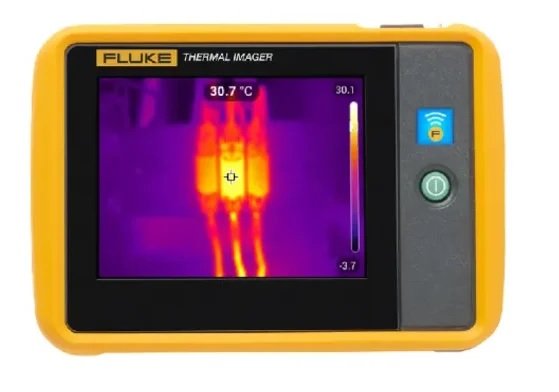
What Is a Pressure Switch Sensor?
A pressure switch sensor is a smart little device designed to keep tabs on pressure levels in gases or liquids. When the pressure hits a pre-set threshold, the sensor springs into action—either turning equipment on or off. It’s like having a reliable safety net that ensures everything runs smoothly and efficiently.
Why Are Pressure Switch Sensors So Important?
Pressure switch sensors are unsung heroes in the industrial world. They’re essential for monitoring and controlling equipment, which keeps operations safe, efficient and reliable. Whether it’s preventing a catastrophic failure or fine-tuning processes, a pressure switch sensor is at the heart of it all.
How Do Pressure Switch Sensors Work?
At its core, a pressure switch sensor has three main parts: the sensing element, which detects changes in pressure; the electrical contacts, which trigger actions like turning machinery on or off and the housing, which is a sturdy outer shell that protects the sensor from damage.
When pressure changes within a system, the sensing element picks it up and communicates with the electrical contacts. Based on the pre-set pressure levels, the sensor either activates or deactivates the equipment. Simple yet ingenious!
Different Types of Pressure Switch Sensors
Not all pressure switch sensors are created equal. They come in various types, including mechanical sensors, which are durable and cost-effective for straightforward applications; electromechanical sensors, which blend mechanical parts with electrical components for improved functionality; and digital sensors, which offer cutting-edge accuracy and efficiency, ideal for high-tech environments.
Each type has its strengths, and their performance can vary based on the demands of the job.
Why Pressure Switch Sensors Are Critical in the Industry
In industrial settings, these sensors are lifesavers—literally. They detect pressure changes and trigger actions to maintain safe and efficient operations. Without them, systems could overheat, break down or worse.
Industries like oil and gas, manufacturing, and water treatment rely heavily on pressure switch sensors. These devices protect equipment, maintain safety standards and optimize performance.
Spotlight on Industry Applications
Pressure switch sensors are vital in many industries. In the oil and gas sector, they monitor and manage pressure in pipelines, preventing dangerous leaks or blowouts. In manufacturing, they ensure machines operate smoothly and safely. In HVAC systems, pressure switch sensors keep heating and cooling systems running efficiently. In water treatment facilities, they regulate pressure in pumps, ensuring effective water flow and waste management.
Maintaining Pressure Switch Sensors
Regular maintenance is key to keeping pressure switch sensors in top shape. Neglecting them can lead to inaccurate readings, equipment failures and costly downtime.
To ensure sensors remain functional, it’s important to inspect them regularly for wear or damage, keep connections clean and secure, calibrate them periodically for accuracy and install them carefully to avoid unnecessary stress on components.
The Future of Pressure Switch Sensors
Technological advancements are revolutionizing these sensors. With AI and machine learning in the mix, they’re becoming smarter, more accurate and capable of predictive maintenance. This means fewer surprises and smoother operations for industries worldwide.
Common Questions About Pressure Switch Sensors
A pressure switch sensor monitors pressure levels and activates or deactivates equipment to maintain safe and efficient operation. To identify a failing sensor, look for inconsistent readings, failure to respond at set pressures or visible damage like corrosion. When a pressure switch fails, it can cause equipment malfunctions, safety risks, or even system breakdowns if the pressure isn’t regulated properly.
Pressure switch sensors might not always get the spotlight, but they’re indispensable in keeping industries running smoothly, safely and efficiently. By understanding their role and maintaining them well, we can ensure they continue to be the silent guardians of industrial operations.
Conclusion
Pressure switch sensors are indispensable components in modern industrial systems. They play a vital role in monitoring and controlling pressure levels in gases and liquids, ensuring safety, efficiency and reliability across various applications. By detecting and responding to pressure changes, these sensors prevent equipment failures, optimize processes and enhance operational performance in industries such as oil and gas, manufacturing, HVAC and water treatment.
The continued integration of advanced technologies like AI and machine learning further improves the functionality and accuracy of pressure switch sensors, paving the way for smarter, more efficient systems. Regular maintenance and proper care are essential to extend their lifespan and ensure accurate performance.
FAQs on Pressure Switch Sensors
What is a pressure switch sensor?
A device that monitors pressure levels and activates or deactivates equipment based on set thresholds.
How does it work?
It detects pressure changes and triggers electrical contacts to control connected equipment.
What types are there?
Mechanical, electromechanical and digital sensors, each suited for different applications.
Why are they important?
They ensure safety, efficiency and reliability in industrial systems by regulating pressure.
Which industries use them?
Oil and gas, manufacturing, HVAC and water treatment rely heavily on these sensors.
What are the signs of failure?
Inconsistent readings, failure to respond or visible damage like corrosion.
What happens if it fails?
It can lead to equipment malfunctions, safety risks and system inefficiencies.
How to maintain them?
Inspect regularly, clean connections and calibrate for accuracy.
How has technology improved them?
AI and machine learning enhance accuracy, reliability and predictive maintenance.
Why is calibration important?
It ensures accurate readings and prevents false triggers.